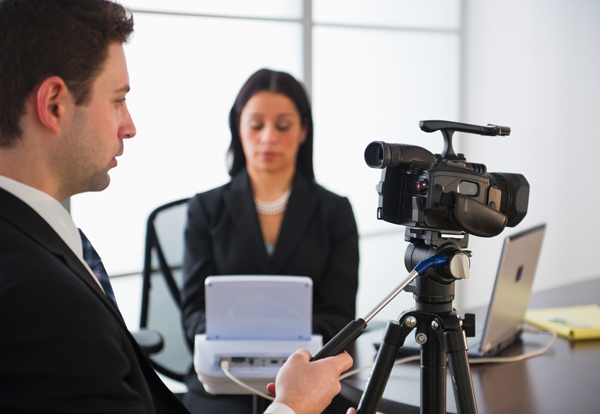Why Legal Videography Is Essential for Accurate Legal Record-Keeping
In the realm of legal proceedings, the accuracy of record-keeping is vital, and legal videography emerges as a vital tool in this context. As we check out the complex benefits of lawful videography, one need to consider its ramifications for the future of judicial integrity and openness.
Significance of Visual Evidence
Developing the value of aesthetic evidence in lawful proceedings is vital for guaranteeing accurate record-keeping and improving the overall integrity of the judicial procedure. Visual proof works as a vital tool in recording events, problems, and various other significant information that might be necessary to a case. Unlike composed accounts, which are susceptible to analysis and predisposition, visual recordings give a purpose, unalterable depiction of truths as they took place.


This form of proof can catch a range of aspects, consisting of witness habits, ecological context, and physical evidence, all of which may affect judicial outcomes. By offering a clear and detailed aesthetic narrative, lawful videography gets rid of uncertainty and aids to maintain the credibility of the evidence.
Furthermore, aesthetic proof can be important in decreasing conflicts over factual disparities, as it permits for a direct contrast against testament and other documented records. In an era where electronic innovation is significantly prevalent, the capacity to present aesthetic evidence properly can dramatically boost the general top quality of legal procedures. Eventually, the consolidation of aesthetic proof not only boosts the paperwork process but likewise enhances public count on the judicial system by promoting transparency and accountability.
Enhancing Testimony Trustworthiness
The integration of legal videography into courtroom procedures substantially boosts the trustworthiness of witness testament. By capturing the subtleties of spoken and non-verbal interaction, video clip recordings supply a more extensive representation of a witness's disposition, emotions, and reliability. This visual documentation permits jurors to observe the witness's body movement, faces, and total conduct, which are essential elements that can influence their understanding of testimony credibility.
Moreover, legal videography decreases the possibility for misinterpretation or distortion of testament that might happen in composed records. Visitors can see and listen to the statement as it was provided, ensuring that the context and tone are protected. This credibility fosters a greater feeling of count on among jurors, that may be extra likely to believe statement that they can witness firsthand.
Additionally, the presence of video clip footage can hinder witnesses from offering deceptive or exaggerated declarations, as they are aware that their testimony is being tape-recorded. This accountability strengthens the integrity of the judicial process. Ultimately, lawful videography offers as an essential device in ensuring that witness testimony is not just properly depicted however likewise checked out with enhanced credibility by all events included.
Comprehensive Document Preservation
Comprehensive document preservation is important for keeping the integrity of legal proceedings. Lawful videography functions as a crucial device in this process, supplying an exact visual and acoustic account of testimonies, depositions, and various other turning points in an instance. Unlike typical written records, video clip recordings capture the subtleties of body language, tone, and feeling, which are essential for recognizing the context and intent behind declarations made throughout legal proceedings.

Additionally, the ability to assess video evidence enables lawyers to recognize critical information that may have been ignored in created documents. By maintaining a detailed archive of lawful procedures with videography, legislation firms can promote the greatest requirements of accuracy and liability, eventually adding to a fairer judicial procedure.
Improving Lawful Procedures
Improving lawful procedures is essential for enhancing performance and reducing delays within the judicial system. Legal videography functions as a critical tool in accomplishing this objective by supplying clear and accurate aesthetic documentation of court hearings, depositions, and testaments. This modern technology enables real-time recording, making sure that all spoken and non-verbal hints are caught, which can assist in quicker resolution of conflicts.
The assimilation of videography right into legal processes reduces dependence on standard techniques, such as prolonged transcripts, which can be lengthy to produce and review. By having actually access to taped video, lawyers can quickly reference vital minutes, enhancing their capability to prepare and present instances effectively. This immediacy also aids in the making clear of testaments, decreasing the potential for misinterpretation.
In addition, aesthetic documentation fosters a much dig this more engaging courtroom experience for jurors, aiding them to grasp intricate info quicker. Inevitably, legal videography enhances communication among all parties involved, from attorneys to judges to jurors, thereby promoting a more reliable judicial procedure (legal videography). In a period where time is of the essence, embracing this modern technology is essential for the modern legal landscape
Admissibility in Court
Accurate documentation is vital not only for effectiveness but also for guaranteeing that proof is permissible in court. Lawful videography offers as a vital tool in this procedure, offering a dependable aesthetic document of testimonies, statements, and events.
To be deemed permissible, legal videography should abide by well established protocols, such as correct equipment usage, appropriate illumination, and clear audio capture. Additionally, it is vital to have qualified videographers that understand the legal requirements surrounding evidence collection. The chain of protection need to likewise be preserved to stop any claims of meddling or modification.
Furthermore, legal videography can boost the persuasiveness of evidence by supplying jurors with a direct view of the testimony, enabling for an extra engaged understanding of the situation. In summary, the integration of legal videography into record-keeping not only sustains effectiveness yet also strengthens the integrity and admissibility of proof in court procedures.
Final Thought
In conclusion, legal videography plays a critical duty in ensuring precise lawful record-keeping by giving objective aesthetic documentation. Eventually, the unification of lawful videography into the judicial procedure promotes transparency and reinforces public depend on in the stability of the view publisher site legal system.